Introduction
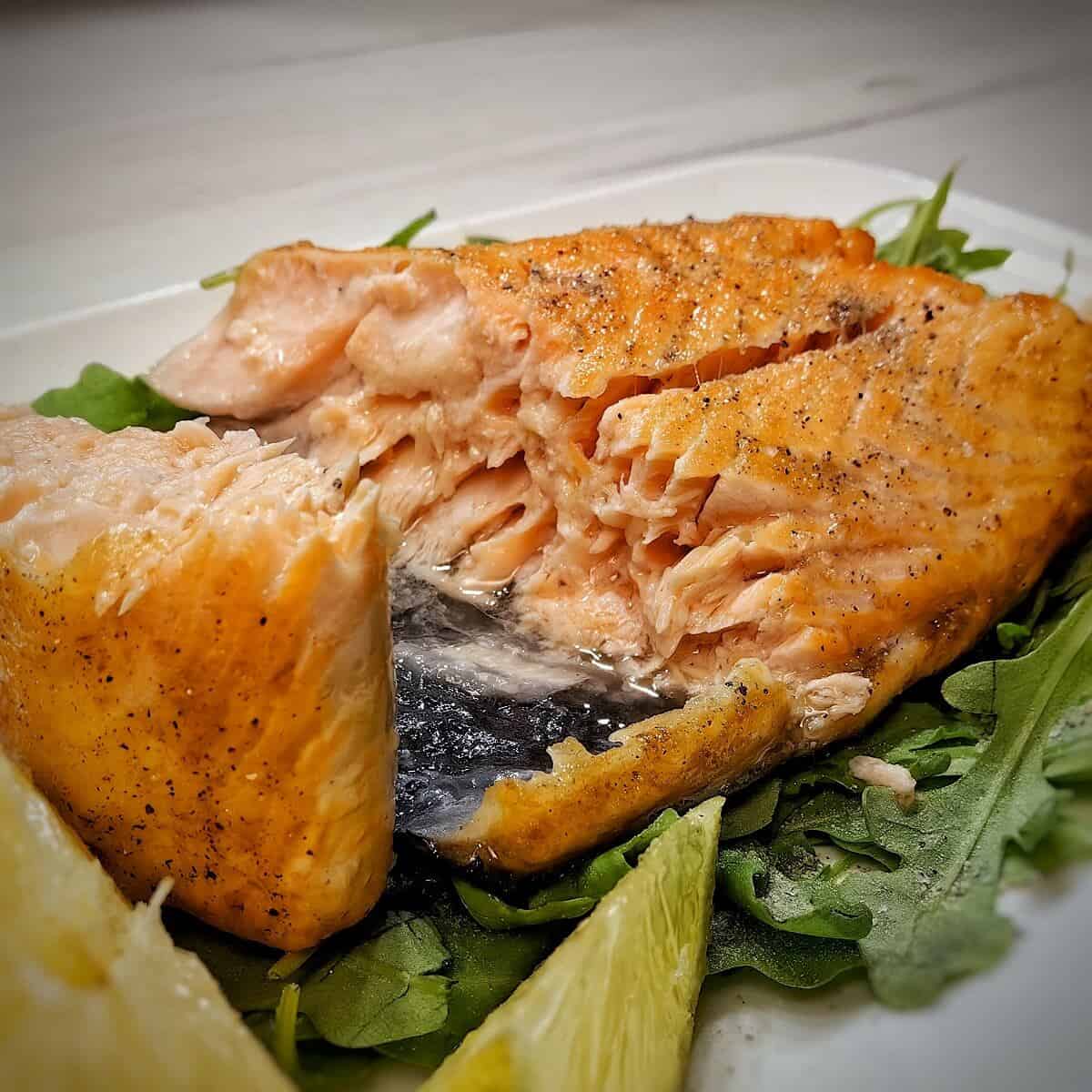
Deep frying has become a popular cooking method for various types of food, but can you deep fry salmon? In this blog, we will explore different cooking methods for salmon, including pan-frying, grilling, baking, and deep frying. While pan-frying and grilling are common methods, deep frying may not be as familiar. However, deep frying can offer a unique and delicious twist to preparing salmon. We will discuss the benefits of deep frying salmon, as well as provide tips and precautions for achieving the best results. So, let’s dive into the world of deep fried salmon and discover a new way to enjoy this delectable seafood dish.
Brief Overview Of Cooking Methods For Salmon
Salmon can be cooked using various methods, each offering unique flavors and textures. Pan-frying is a popular choice, where the salmon is seared in a skillet for a crispy exterior and tender interior. Grilling is another option, imparting a smoky flavor and beautiful grill marks. Baking salmon in the oven results in a moist and flaky texture. And for those looking for something different, deep frying salmon can provide a crispy and indulgent twist. Each method offers its own benefits, allowing cooks to choose based on their preferences and desired results.
Benefits Of Deep Frying Salmon
Deep frying salmon offers several benefits that make it a popular cooking method. Firstly, deep frying creates a crispy exterior while keeping the interior moist and flavorful. This contrast in texture adds an enjoyable eating experience. Additionally, deep frying allows for a quick and convenient preparation method, perfect for those who are short on time. The high heat of deep frying also cooks the salmon quickly, resulting in a shorter cooking time compared to other methods. Overall, deep frying salmon provides a delicious and indulgent twist to enjoying this nutritious fish.
Pan-fried Salmon
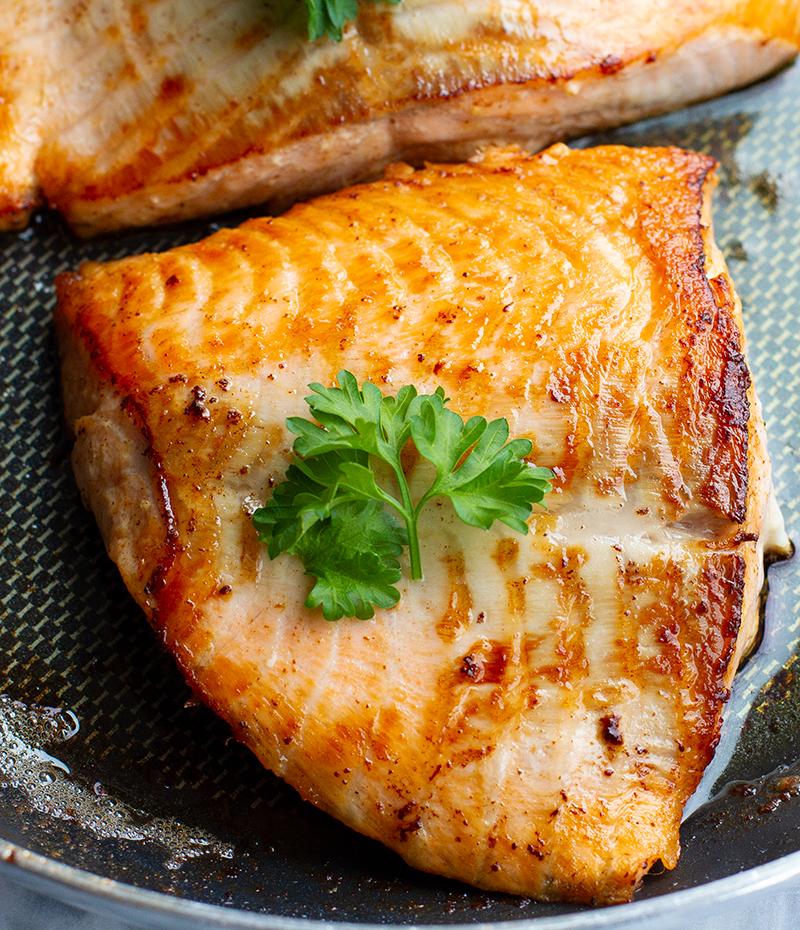
Pan-fried salmon is a classic cooking technique that results in a deliciously crispy skin and a moist, tender interior. To pan-fry salmon, heat a skillet over medium-high heat and add oil or butter. Place the salmon skin side down and cook for a few minutes until the skin is crispy. Flip the salmon and cook for a few more minutes until it’s cooked to your desired doneness. The high heat and quick cooking time of pan-frying help to retain the natural flavors and moisture of the salmon. Pair your pan-fried salmon with a squeeze of lemon juice or your favorite sauce for a simple and satisfying meal.
Pan-fried Salmon Cooking Technique
To achieve perfectly cooked pan-fried salmon, start by heating a skillet over medium-high heat and adding oil or butter. Place the salmon in the skillet, skin side down, and cook for a few minutes until the skin becomes crispy. Flip the salmon and cook for a few more minutes until it reaches your desired doneness. The high heat allows for a crispy exterior while keeping the interior moist and tender. Serve with a squeeze of lemon juice or your favorite sauce for added flavor. [7]
Tips For Achieving A Crispy Skin
To achieve a crispy skin when pan-frying salmon, follow these tips:
- Use a hot skillet: Preheat the skillet over medium-high heat before adding the salmon. The high heat will help crisp up the skin.
- Pat the skin dry: Make sure the skin of the salmon is dry before placing it in the skillet. This will help in achieving a crispy texture.
- Avoid overcrowding the skillet: Allow enough space between each piece of salmon to ensure that the heat is evenly distributed, resulting in a crispy skin.
- Don’t flip too soon: Resist the temptation to flip the salmon too early. Let it cook undisturbed for a few minutes to allow the skin to crisp up nicely.
- Use oil or butter: Adding oil or butter to the skillet will help enhance the flavor and aid in achieving a crispy skin.
By following these tips, you can enjoy perfectly crispy salmon skin that adds an extra delicious element to your dish.
Grilled Salmon
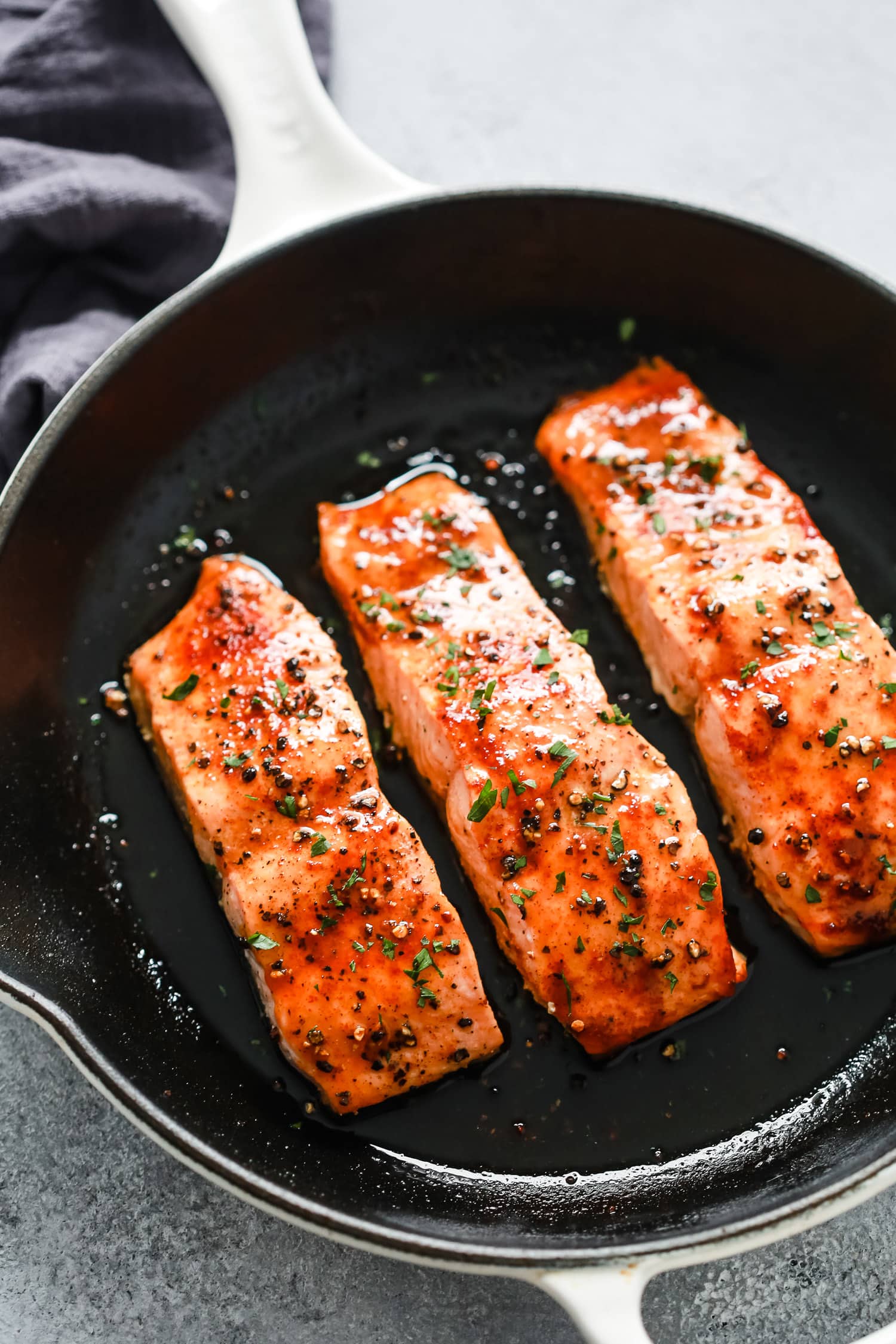
Grilled salmon is a popular cooking method that imparts a delicious smoky flavor to the fish. It involves cooking the salmon over direct heat on a grill, resulting in a perfectly charred exterior and a tender, juicy interior. The high heat of the grill creates those beautiful grill marks and caramelization on the salmon’s surface. To enhance the flavor even further, marinades and seasonings can be used to add a variety of flavors. Grilled salmon can be enjoyed on its own, in salads, or as a topping for sandwiches or tacos.
Grilling Salmon And Its Distinct Flavors
Grilling salmon is a popular cooking method that imparts a delicious smoky flavor to the fish. The high heat of the grill creates beautiful grill marks and caramelization on the surface of the salmon. This cooking technique brings out the natural oils in the fish, resulting in a juicy and flavorful texture. Grilled salmon can be enjoyed on its own, showcasing the simple yet delectable flavors of the fish. Alternatively, marinades and seasonings can be used to enhance the taste, offering a variety of flavor profiles such as citrus, garlic, or herbs. Grilled salmon is a versatile dish that can be easily customized to suit different tastes and preferences.
Marinades And Seasonings For Grilled Salmon
Marinades and seasonings can elevate the flavor of grilled salmon to new heights. A simple marinade of lemon juice, olive oil, and minced garlic adds brightness and tanginess to the fish. For those who prefer a smoky and spicy kick, a chipotle marinade with adobo sauce, lime juice, and honey can be the perfect choice. Alternatively, a combination of fresh herbs like dill, parsley, and thyme can provide a refreshing and aromatic taste. It is important to let the salmon marinate for at least 30 minutes to allow the flavors to penetrate the flesh.
Baked Salmon
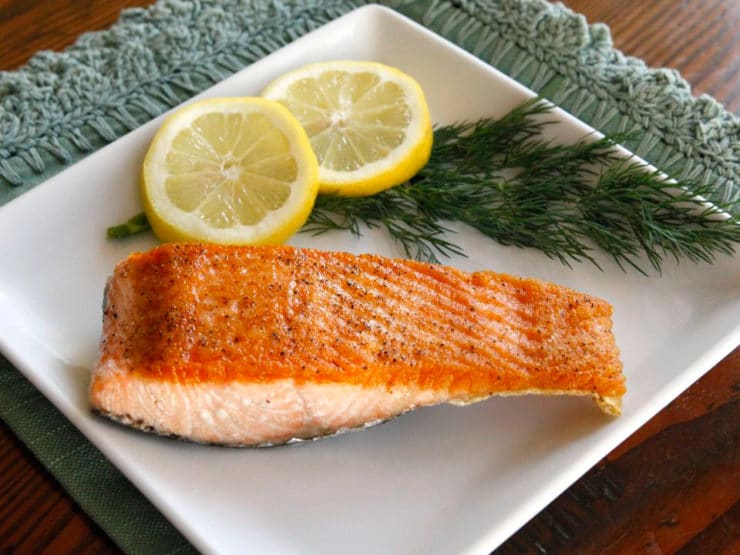
Baking salmon is a popular method that results in a tender and moist fish. To bake salmon, preheat the oven to 425°F (220°C) and place the seasoned salmon fillets on a baking sheet lined with parchment paper. Bake for about 12-15 minutes or until the salmon is cooked through and flakes easily with a fork. Baking allows you to experiment with different toppings and glazes, such as lemon slices, herbs, or a sweet and tangy honey mustard glaze. This method is perfect for those who prefer a healthier cooking option without sacrificing taste.
Baking Salmon For A Tender And Moist Result
Baking salmon is a popular method that results in a tender and moist fish. To bake salmon, preheat the oven to 425°F (220°C) and place the seasoned salmon fillets on a baking sheet lined with parchment paper. Bake for about 12-15 minutes or until the salmon is cooked through and flakes easily with a fork. Baking allows you to experiment with different toppings and glazes, such as lemon slices, herbs, or a sweet and tangy honey mustard glaze. This method is perfect for those who prefer a healthier cooking option without sacrificing taste. [19]
Different Toppings And Glazes For Baked Salmon
When it comes to baked salmon, there are numerous options for toppings and glazes that can enhance the flavor of the fish. Some popular choices include:
- Lemon and Herb: Squeeze fresh lemon juice over the salmon and sprinkle it with a mixture of chopped herbs like dill, parsley, and thyme. The citrusy tang and aromatic herbs complement the salmon perfectly.
- Honey Mustard: Create a sweet and tangy glaze by combining honey, Dijon mustard, and a dash of soy sauce. Brush it onto the salmon before baking for a deliciously caramelized crust.
- Teriyaki: Marinate the salmon in a homemade teriyaki sauce made from soy sauce, ginger, garlic, and brown sugar. The result is a flavorful and slightly sweet glaze that pairs well with the salmon.
- Pesto: Spread a thin layer of your favorite pesto on top of the salmon before baking. The herbaceous and garlicky flavors of the pesto enhance the natural taste of the fish.
- Asian-inspired: Give your salmon an Asian twist by brushing it with a mixture of soy sauce, sesame oil, honey, and minced garlic. This combination adds a savory and slightly sweet glaze.
These different toppings and glazes allow you to experiment with various flavors and find your favorite way to enjoy baked salmon.
Deep-fried Salmon
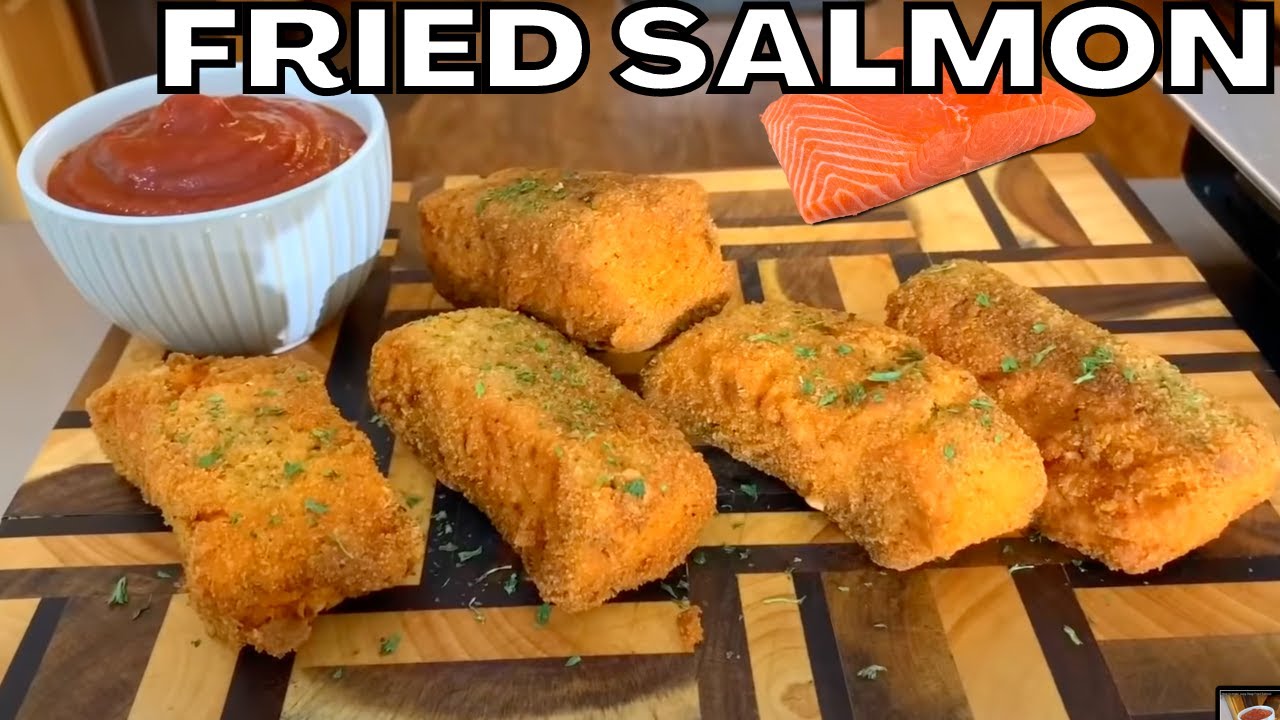
Deep-fried salmon offers a unique twist on this popular fish. While not a traditional method of cooking salmon, deep-frying achieves a deliciously crispy exterior while maintaining a tender and flaky interior. The process involves coating the salmon fillets in a light batter or breading and frying them in hot oil until golden brown. This cooking method adds crunch and a satisfying texture to the fish, making it a delectable option for those who enjoy fried food. However, it’s important to note that deep-frying should be done with caution and in moderation due to the high-fat content.
Exploring The Possibility Of Deep Frying Salmon
Deep frying salmon may not be the most traditional method of cooking this fish, but it offers a unique twist that is worth exploring. Deep frying can give the salmon a deliciously crispy exterior while retaining its tender and flaky interior. The process involves coating the salmon fillets in a light batter or breading and frying them in hot oil until they turn golden brown. This cooking method adds a satisfying crunch and texture to the fish, making it a delectable option for those who enjoy fried food. However, it’s important to exercise caution and moderation due to the high-fat content.
Best Practices And Precautions For Deep Frying
When deep frying salmon, it is important to follow some best practices and take precautions to ensure a successful and safe cooking experience. Here are some tips to keep in mind:
- Use the right oil: Choose an oil with a high smoke point, such as vegetable or canola oil, for deep frying. This will prevent the oil from breaking down at high temperatures.
- Maintain the correct temperature: Keep the oil at a consistent temperature of around 350°F (175°C) throughout the frying process. Using a deep-fry thermometer can help you monitor and regulate the temperature accurately.
- Dry the salmon fillets: Before coating the salmon with batter or breading, make sure to pat them dry with paper towels. This will prevent excess moisture, which can cause the oil to splatter.
- Fry in small batches: Avoid overcrowding the fryer or pan by frying the salmon in small batches. This will ensure that each piece cooks evenly and maintains its crispy texture.
- Be cautious with hot oil: Handle hot oil with caution to avoid burns. Use long tongs or a slotted spoon to gently place and remove the salmon from the oil. Avoid any sudden movements that could cause oil splatter.
- Drain excess oil: Once the salmon is cooked, place it on a paper towel-lined plate or wire rack to drain off any excess oil. This will help remove excess oil and keep the salmon crispy.
- Serve immediately: Deep-fried salmon is best enjoyed immediately after frying while it is still hot and crispy. Serve with a side of your favorite sauce or dip for added flavor.
Remember to always follow safety guidelines when working with hot oil and never leave the stove unattended while deep frying.
Conclusion
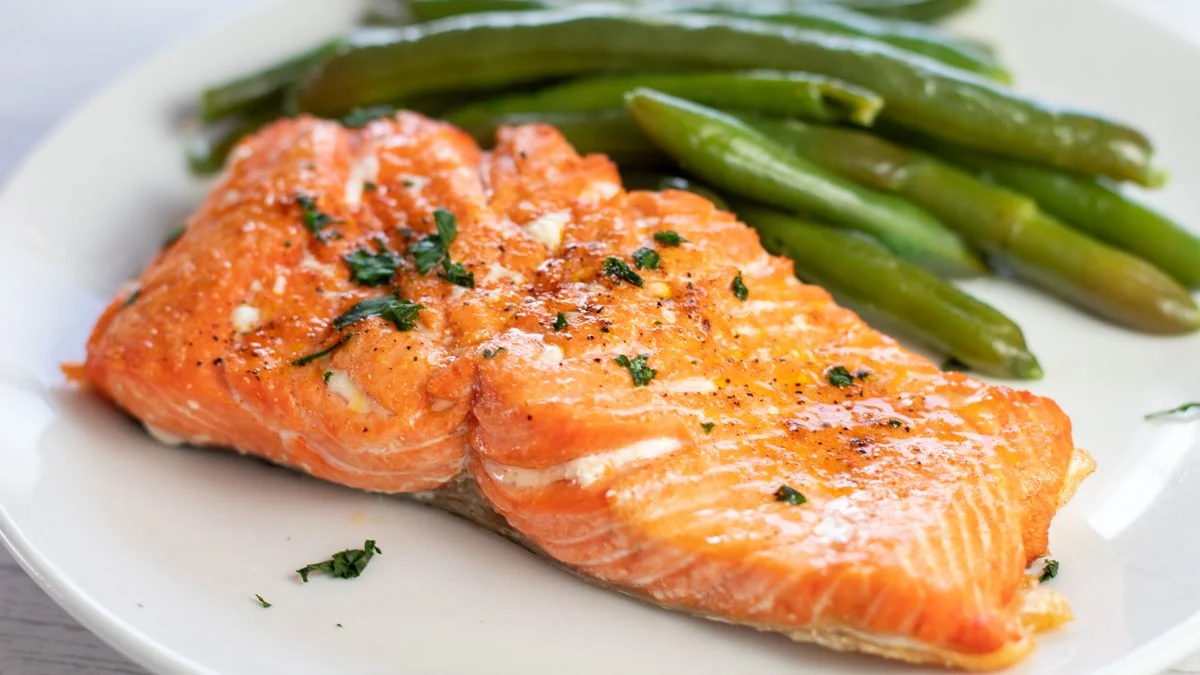
In conclusion, when it comes to cooking salmon, there are several methods to choose from, each offering its own unique flavors and textures. Pan-frying provides a crispy skin and tender flesh, while grilling imparts a smoky flavor. Baking results in moist and flavorful salmon, and deep-frying offers a crispy and indulgent option. Ultimately, the ideal cooking method for salmon depends on personal preferences and desired results. Whether you choose to pan-fry, grill, bake, or deep-fry, the key is to select high-quality salmon and follow proper cooking techniques for a delicious and satisfying meal.
Comparing Different Cooking Methods For Salmon
When it comes to cooking salmon, there are several methods to choose from, each offering its own unique flavors and textures. Pan-frying provides a crispy skin and tender flesh, while grilling imparts a smoky flavor. Baking results in moist and flavorful salmon, and deep-frying offers a crispy and indulgent option. Ultimately, the ideal cooking method for salmon depends on personal preferences and desired results. Whether you choose to pan-fry, grill, bake, or deep-fry, the key is to select high-quality salmon and follow proper cooking techniques for a delicious and satisfying meal. [31][32]
Choosing The Ideal Cooking Method Based On Preferences And Desired Results
When it comes to choosing the ideal cooking method for salmon, it ultimately depends on personal preferences and desired results. Here are some factors to consider:
- Texture: If you prefer a crispy skin and tender flesh, pan-frying is a great option. For a moist and flavorful outcome, baking is the way to go. Grilling provides a smoky flavor and beautiful grill marks.
- Flavor: Each cooking method imparts its own distinct flavor to the salmon. Grilling adds a smoky taste, while baking allows for the flavors of seasonings and toppings to shine. Pan-frying can bring out the natural flavors of the fish.
- Time and effort: Consider the amount of time and effort you’re willing to invest. Pan-frying and grilling require more active cooking, while baking and deep-frying require less attention.
- Dietary preferences: If you prefer a healthier option, baking or grilling may be more suitable. If you’re looking for an indulgent treat, deep-frying can offer a crispy and flavorful experience.
Ultimately, the best cooking method for salmon is the one that aligns with your taste preferences and desired outcome. Experimenting with different methods will help you discover your favorite way to enjoy this delicious seafood.
Frequently Asked Questions about Deep Frying Salmon
Q: Can you deep fry salmon?
A: Yes, you can definitely deep fry salmon!
Q: Is deep fried salmon delicious?
A: Many people find deep fried salmon to be a delicious and flavorful option. The deep frying process adds a crispy texture to the fish while keeping it juicy and tender on the inside.
Q: What kind of salmon is best for deep frying?
A: It is recommended to use boneless and skinless salmon fillets for deep frying. This allows for even and consistent cooking. Fresh, high-quality salmon works best, but you can also use frozen fillets.
Q: How do I prepare salmon for deep frying?
A: Prior to deep frying, it is suggested to season the salmon fillets with salt, pepper, and any other desired spices or herbs. You can also marinate the salmon to enhance its flavor.
Q: Should I coat the salmon before deep frying?
A: Yes, coating the salmon fillets with a thin layer of flour or breadcrumbs can help create a crispy crust. This step is optional but highly recommended for a satisfying texture.
Q: What type of oil is best for deep frying salmon?
A: The ideal oil for deep frying salmon is one with a high smoke point, such as vegetable oil, canola oil, or peanut oil. These oils are well-suited to withstand high temperatures required for deep frying.
Q: How long should I deep fry salmon?
A: The cooking time will depend on the thickness of the fillets. As a general guideline, deep fry salmon for 3-5 minutes on each side until it reaches an internal temperature of 145°F (63°C). The fish should be golden brown and flaky.
Q: Can I deep fry salmon with the skin on?
A: Although it is recommended to remove the skin before deep frying to ensure an even and crispy texture, you can leave the skin on if desired. Just make sure it is properly scaled and crisped up during frying.
Q: Can deep frying salmon be a healthy cooking method?
A: Deep frying is generally not considered the healthiest cooking technique. However, you can make healthier choices by opting for good quality oils, controlling portion sizes, and complementing your meal with nutritious side dishes.
Q: What are some serving suggestions for deep fried salmon?
A: Deep fried salmon pairs well with a variety of side dishes and sauces. You can serve it with steamed vegetables, roasted potatoes, rice, or a fresh green salad. Tartar sauce, lemon wedges, or a creamy dill sauce work as excellent accompaniments.
Remember, deep frying salmon can be a delightful way to enjoy this flavorful fish. However, it’s essential to practice caution while working with hot oil and ensure that the salmon is cooked to the correct internal temperature for optimal food safety.

A small, independently run fish and chip shop using quality ingredients cooked freshly in our kitchen to ensure great tasting food. All of our drinks are in glass bottles, and all of our takeaway packaging is recyclable or compostable to help reduce our impact on the environment.